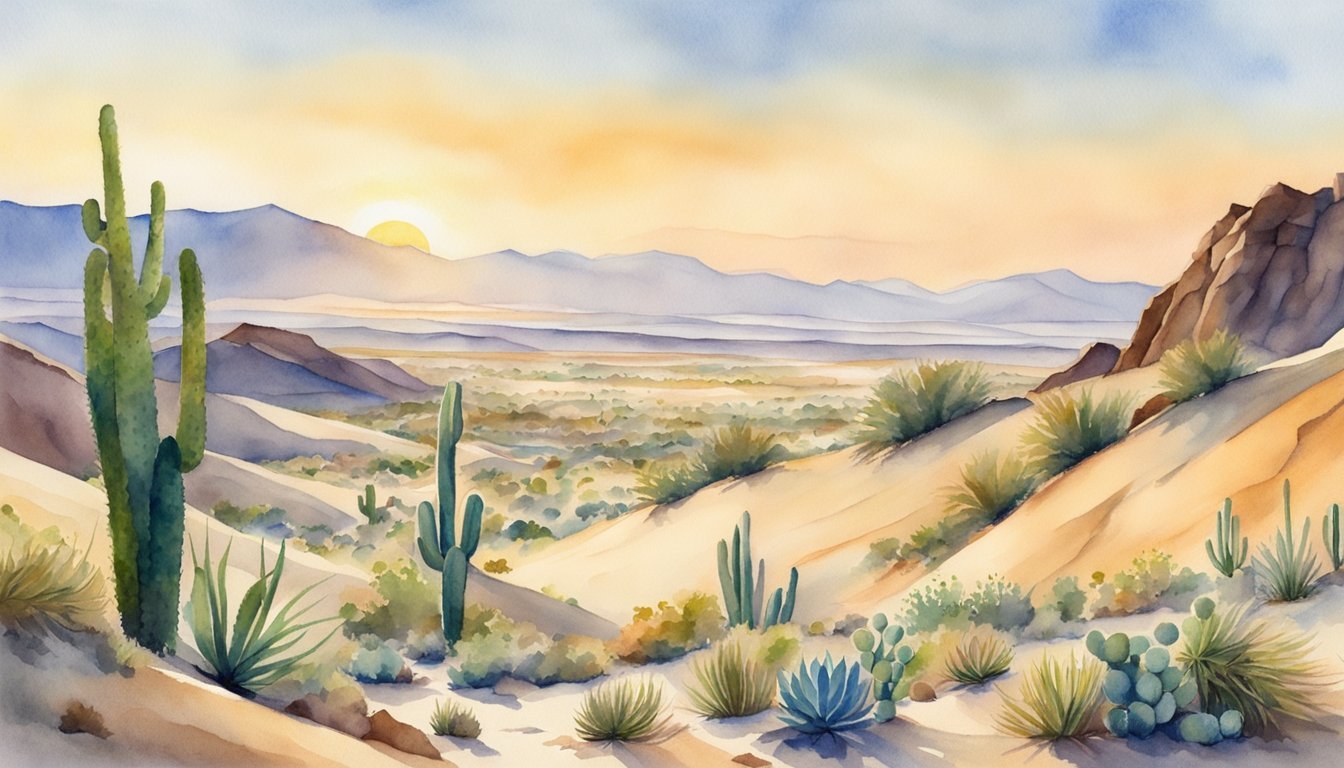Distinctive Climates of Deserts
Deserts are characterized by their extreme climates, varying from scorching heat to bitter cold, each fostering unique ecosystems and weather patterns.
Hot Deserts: From Sahara to Mojave
Hot deserts are typically found around the equator, where temperatures can soar to high levels year-round. The Sahara Desert is a prime example, spanning across 12 North African countries and recognized as the largest hot desert in the world. The Mojave Desert, while smaller, exhibits similar conditions with intense heat and scant rainfall. These deserts are defined by:
- Temperature: Often exceeding 50°C (122°F) in the summer.
- Precipitation: Less than 25 cm (10 inches) annually.
- Wind: Can create massive sand dunes.
Cold Deserts: Arctic to Antarctic
Contrary to popular belief, not all deserts are scorching hot. Cold deserts, such as those in the Arctic and Antarctic regions, deal with low temperatures and can receive snowfall. These polar deserts experience more precipitation than their hot counterparts but in the form of snow, which remains on the ground for most of the year. Key characteristics include:
- Temperature: Often below freezing.
- Snowfall: Acting as a form of precipitation.
Adaptations to Extreme Conditions
Desert habitats are exposed to harsh conditions that demand remarkable adaptations from their inhabitants. Due to the extreme dryness and low humidity, flora and fauna in both hot and cold deserts have developed survival mechanisms. For example, some plants can store water efficiently, while animals may be nocturnal to avoid the daytime heat or have thick fur for insulation against cold. The Atacama Desert in South America is noted as one of the driest deserts, highlighting the extreme adaptations necessary for life in these regions. Weather patterns in deserts can include:
- Dryness: Low humidity is a common factor.
- Rain: Rare in hot deserts, often absent for years.
- Wind: Plays a significant role in shaping the desert landscape.
Desert climates are remarkable for their ability to encompass both ends of the temperature spectrum, making them fascinating subjects of study in terms of climate change and desertification patterns over time.
Life and Landscape in the Desert

The desert is a place of extreme conditions, where life has made remarkable adaptations to thrive. From the unique flora and fauna to the distinctive geological formations, deserts offer a closer look at nature’s resilience.
Flora: Surviving With Scarce Water
Deserts are home to a variety of plants that have developed strategies to survive with limited water resources. Cacti are perhaps the most iconic desert plants, storing water in their thick, fleshy tissues. These hardy species can endure the harshest droughts by minimizing water loss. Additionally, other plants like shrubs and certain species of trees have adapted root systems that can tap into deep water sources or spread out wide to maximize rainwater collection. Read about unique desert landscapes and vegetation, illustrating the adaptation of desert plants.
Fauna: Desert Animals and Their Unique Traits
Desert animals possess a range of exceptional traits that enable them to live in an environment with scarce water and extreme temperatures. Mammals, reptiles, and insects have adapted by developing behaviors like being nocturnal to avoid the heat of the day. There are creatures, such as the camel, that can go for long periods without water, while many reptiles can regulate their body temperature to cope with the blazing sun. The diverse ecosystem supports not just the typical lizards and snakes, but also a variety of mammals and birds, each with fascinating survival strategies. Experience the variety of wildlife adaptations in the desert.
Desert Geology and Ecosystems
The geology of deserts is as remarkable as the life it supports. Landscapes are often dominated by vast sand dunes, yet deserts also include rock formations and mineral deposits that tell tales of the earth’s history. The oldest desert, the Namib in Africa, has been arid for tens of millions of years, showing how long these ecosystems can persist. North American deserts, like the Mojave and Sonoran, showcase the variety of desert ecosystems from sandy plains to stony mesas, each supporting a variety of life uniquely adapted to their specific environment. Deserts are not monolithic; they each hold a specific niche within the planet’s ecosystems, often housing a surprising level of biodiversity. Explore the geology and biodiversity of deserts in North America and beyond.

